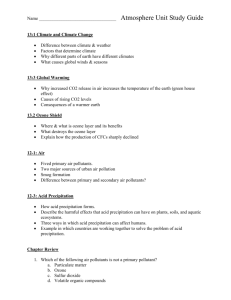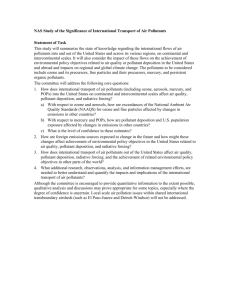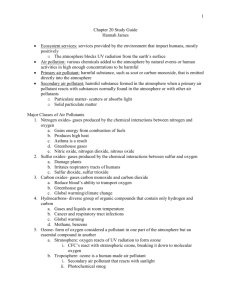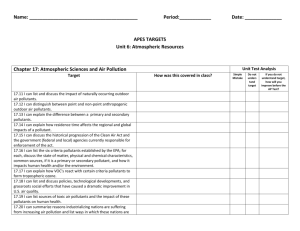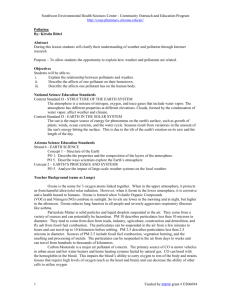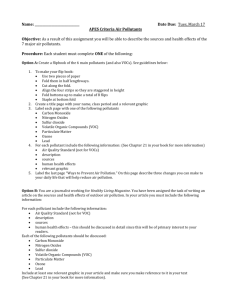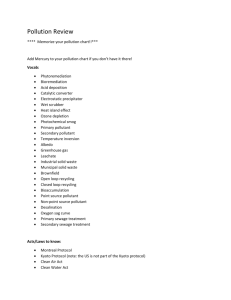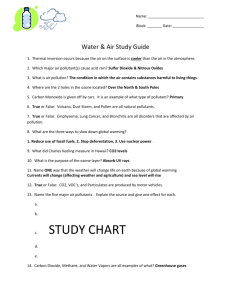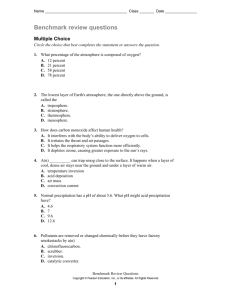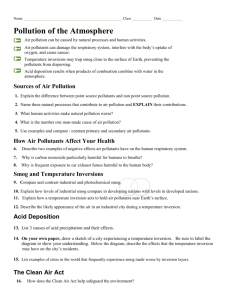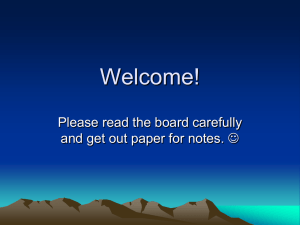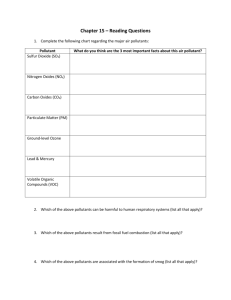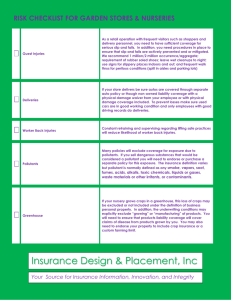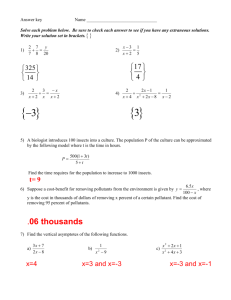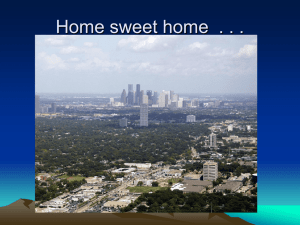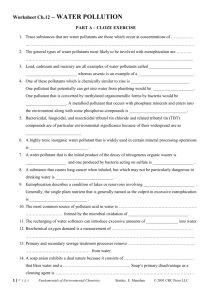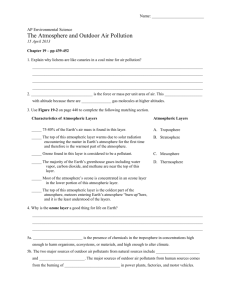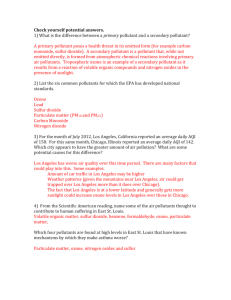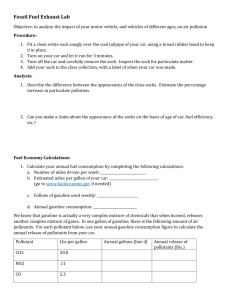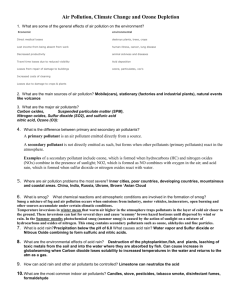Air Pollution Study Guide
advertisement
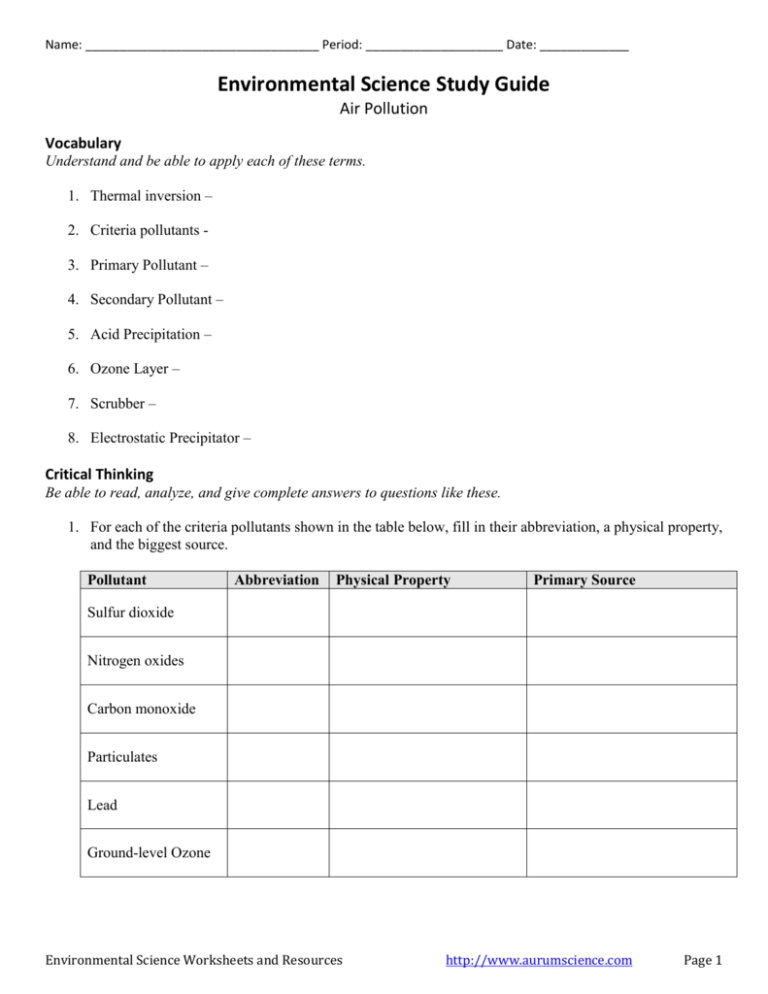
Name: __________________________________ Period: ____________________ Date: _____________ Environmental Science Study Guide Air Pollution Vocabulary Understand and be able to apply each of these terms. 1. Thermal inversion – 2. Criteria pollutants 3. Primary Pollutant – 4. Secondary Pollutant – 5. Acid Precipitation – 6. Ozone Layer – 7. Scrubber – 8. Electrostatic Precipitator – Critical Thinking Be able to read, analyze, and give complete answers to questions like these. 1. For each of the criteria pollutants shown in the table below, fill in their abbreviation, a physical property, and the biggest source. Pollutant Abbreviation Physical Property Primary Source Sulfur dioxide Nitrogen oxides Carbon monoxide Particulates Lead Ground-level Ozone Environmental Science Worksheets and Resources http://www.aurumscience.com Page 1 2. What type of geographic area is the most likely to experience a thermal inversion? Why? 3. What season are ozone action days most likely to be declared? 4. What would you expect the pH of normal rainwater to be? What about acid rain? 5. How does acid precipitation affect living organisms? Human-made structures? 6. For each of these secondary pollutants, explain what primary pollutants react to form them. a. Ground-level ozone – b. Acid precipitation – c. Smog – 7. What are volatile organic compounds, and what is an example? 8. What specific pollutant was causing the depletion of the ozone layer? What international treaty was signed that phased out the use of these compounds? 9. What two pollutants do catalytic converters help to neutralize before car exhaust is released? 10. Fuel switching involves moving from a high-polluting fuel source to a cleaner one. What fuel source was behind the Great Smog in London in 1952? What fuel is now used in its place?
